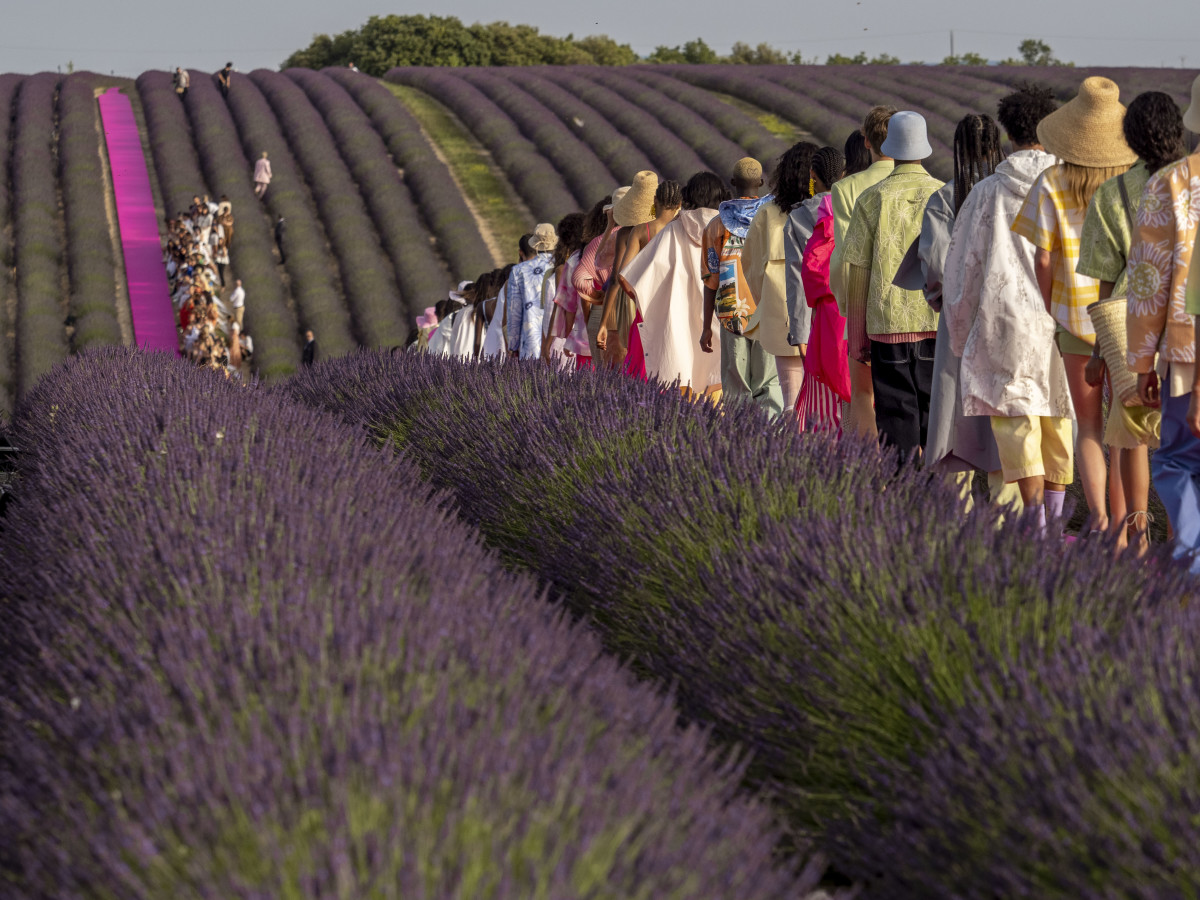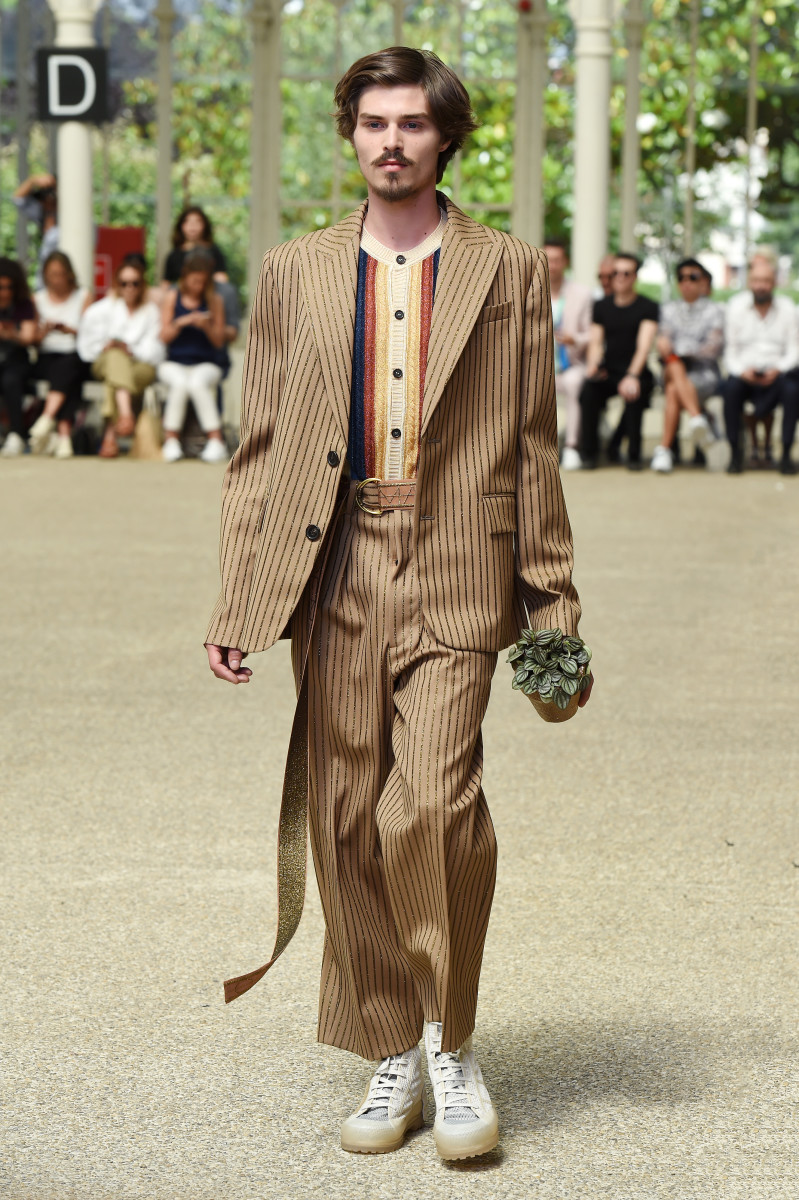A month later, Mary-Kate and Ashley Olsen's the Row debuted their very first men's collection. Simon Porte Jacquemus unveiled his first menswear collection in a seaside cove along the outskirts of Marseille four months ago, and it's quickly become an industry favorite; "In Paris, Men Are Invited into the Couture Dream," GQ's Rachel Tashjian wrote in July. And these designers are just a few on a growing list: Stella McCartney, Gabriela Hearst and Sies Marjan have all added menswear in recent seasons as well. Arguably, much of this can be traced back to Alessandro Michele's debut as creative director of Gucci: From that Fall 2015 men's range on, his quirky, retro vision whetted the public's appetite for more expressive, creative menswear while also driving sales for the Italian house.

"One of the main reasons why those designers and brands are expanding into menswear is because the market is there, the market is growing and there is demand," Pierre A. M’pelé, editor-in-chief of SCRNSHT (aka @pamboy on Twitter) tells Fashionista of this ongoing recent trend.
Coincidentally or not, there's also a growing market for male celebs engaging with stylists for risk-taking red carpet looks. Take Ilaria Urbinati, for instance, who has a client list including Dwayne "The Rock" Johnson, Donald Glover, Chris Evans and Bradley Cooper, or Samantha McMillen, whose clients include Ryan Gosling, Chris Rock and Chris Hemsworth — just two examples of stylists helping to elevate leading men as formidable style contemporaries to their female peers. These stylists, along with their clients, have given menswear a pop cultural legitimacy and exposure to a demographic outside of the fashion week runway continuum.

Look no further than recent red carpets — still one of the biggest forms of publicity for fashion brands — from Lil Nas X in custom baby blue Pyer Moss at the BET Awards to Jay Z's expertly exaggerated lapels at the London premiere of The Lion King or the masterful tailoring on Tom Holland in Zegna at the LA premiere of Spider-Man: Far From Home premiere. And it's not just the suiting: There's Maluma walking the street in a multi-colored JW Anderson pullover, Post Malone in Dolly Parton-print pajamas or Justin Theroux biking the streets of New York City with the image of Britney Spears's third album screen-printed on his tank top.
Another potential impetus for this moment: social media. Womenswear-only brands and designers might see the limitations of only catering to one gender for an app as influential Instagram. Things like IG "fit pics," for instance, have helped to give rise not just to the popularity of menswear, but to the sense of pride (and clout) many are associating with it. With an uptick in the male prioritization of sartorial statements comes a healthy influx of supply. Two more designers getting in on the action are Marco de Vincenzo and Gherardo Felloni, both of whom felt a shift in and out of the industry and decided to react as a result. "Now is the moment," de Vincenzo thought to himself in February when he finally entered the menswear foray, a desire he'd been marinating on for several seasons.
"I think that many designers, including myself, consider women's fashion a creatively freer possibility," he tells Fashionista. "In reality, it is a changeable point of view because more and more men are choosing fashion to get rid of certain stereotypes, [bulking up] their wardrobe with special pieces."
Felloni, the creative director at Maison Roger Vivier, which in 2018 released the first men's shoe in the house's 70-plus year history, says he was inspired by what he calls this historical moment in fashion. "Now, there are less and less differences between men's and women's fashion," he tells Fashionista. "Many women wear masculine shoes, and this led me to design men's styles for women. Then, as soon as I saw the collection, I thought it would also be perfect for men, and so I designed the masculine equivalent."
It's not just the delineation between traditional menswear and womenswear which is shifting, but the business of menswear itself, which has grown greatly. From the not-yet-plateaued popularity of streetwear, to luxury brands adopting the "drop" distribution model in which limited amounts of product are released in regular spurts, to expanding size ranges, menswear isn't just having a moment; it's a full blown movement, and one that shows no signs of slowing down. In 2018, market analyst Euromonitor International forecasted to Business of Fashion that menswear will outpace womenswear in growth by no later than 2022.
And with this consumer expansion, comes the possibility of widening the lens (or loosening the restrictions, depending on your perspective) on what menswear typically looks like. Questions that have long been asked of womenswear designers — like "Who is the woman wearing this? Where is she going?" — can now be ruminated over for guys.

"I think the male consumer is now looking for more seasonal and exciting products, compared to the traditional men's offering of dress shoes or trainers," Mary Alice Malone, founder and creative director of Malone Souliers, tells Fashionista. "Our collection offers something in between that allows for our man to explore spaces beyond functionality and to accessorize as an expression of identity."
There's also practicality. Take, for instance, the enduring problem of men not having something equivalent to a purse that has everyday functionality. "I think Kim Jones introducing the saddle bag for men has me seeing quite a few of those on the high end, but also seeing more crossbody bags in general on men; kind of like evolved fanny packs worn crossbody style," designer Chris Gelinas says. It's not entirely aesthetic, he explains. "The tighter and shorter the shorts in summer makes carrying the essentials tricky and these seem to be the of the moment solution."
So the demand is up, and the supply seems to be following suit — that's all good news, right? It depends on how you look at it. "The current industry is structured in a way that there is always a need for growth in order to continue making profit and continue to develop, so instead of decelerating, everyone is accelerating and opening new doors to reach those financial goals or economic goals as companies," M’pelé explains, adding that this raises a bigger question for him around the need to grow.
"Do we need to foray into beauty and cosmetics and menswear when this is not at the core of one's identity? I think this is probably the most important question we need to ask ourselves as an industry."

No comments:
Post a Comment